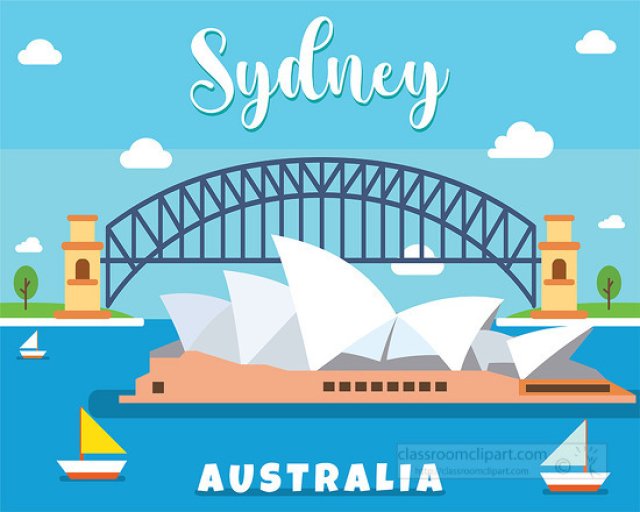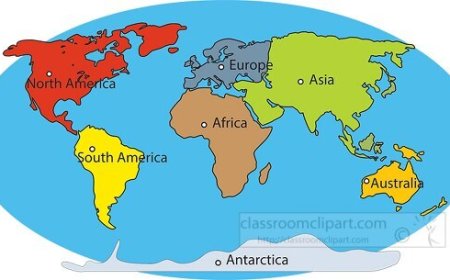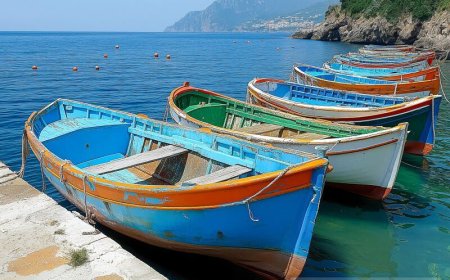Australia and Oceania: Geography, Wildlife, and Cultures for Students
Explore Australia and Oceania’s geography, countries, wildlife, and traditions in this educational article for students ages 8–16. Learn about the Great Barrier Reef and more.

🌏 Australia and Oceania: Islands, Cultures, and Natural Wonders
🗺 Introduction
Australia and Oceania make up the smallest continent, but one of the most unique. Located mostly in the Southern Hemisphere, this region includes the country of Australia and thousands of islands spread across the Pacific Ocean. Together, they form a region filled with volcanoes, coral reefs, deserts, rainforests, and ancient cultures.
In this article, you’ll learn about Australia and Oceania’s geography, countries, animals, and people. From kangaroos and coral reefs to volcanoes and native traditions, this part of the world is full of surprises!
🌍 Geography of Australia and Oceania
Australia and Oceania is made up of:
Australia – the largest landmass and the only country that is also a continent
New Zealand – two main islands and many smaller ones
The Pacific Islands – grouped into Melanesia, Micronesia, and Polynesia
The region is surrounded by the Indian Ocean to the west and the Pacific Ocean to the east. The islands of Oceania are spread across a massive area, even though they are mostly small in size.
Australia’s geography includes deserts like the Outback, tropical forests in the northeast, and snowy mountains in the southeast. The Great Barrier Reef, located off Australia’s northeastern coast, is the largest coral reef system in the world.
🗺 Countries and Regions
The main countries in this region include:
|
Australia New Zealand Papua New Guinea Fiji Samoa |
Tonga Micronesia Vanuatu Solomon Islands Palau |
Many of the smaller islands are independent nations, while others are territories connected to countries like the United States, France, or New Zealand.
The three island regions of Oceania are:
Melanesia – includes Papua New Guinea, Fiji, and the Solomon Islands
Micronesia – includes the Marshall Islands, Palau, and Nauru
Polynesia – includes Samoa, Tonga, and Tahiti
👨👩👧👦 People and Cultures
Oceania is home to some of the oldest living cultures in the world. The Aboriginal peoples of Australia have lived there for more than 60,000 years, using art, music, and storytelling to pass down knowledge. In New Zealand, the Māori people are known for their rich traditions, language, and war dances called haka.
Many island nations have their own languages, songs, and customs. Pacific Islanders often celebrate with colorful clothing, traditional dances, and community feasts. Though English is commonly spoken in Australia and New Zealand, many other languages—like Tok Pisin, Samoan, and Tongan—are spoken across the region.
People in Australia and Oceania live in both modern cities and remote villages. Popular cities include Sydney, Melbourne, Auckland, and Port Moresby.
🐨 Wildlife and Nature
Australia and Oceania are famous for animals that live nowhere else on Earth. Many of these species evolved on islands without predators, which makes them especially unique.
Famous animals include:
- Kangaroos, koalas, and wombats – found only in Australia
- Platypus – a mammal that lays eggs and lives in rivers
- Cassowaries – flightless birds that live in tropical forests
- Kiwis – small, shy birds and national symbol of New Zealand
- Flying foxes and giant coconut crabs on Pacific islands
The Great Barrier Reef is a natural wonder full of marine life such as clownfish, sea turtles, rays, and coral. Volcanoes, earthquakes, and tropical storms are common in some island nations due to their location on the Ring of Fire.
🏛 Landmarks and History
The region offers incredible natural and cultural landmarks:
🐠 Great Barrier Reef – World’s largest coral reef system, visible from space
🏜 Uluru (Ayers Rock) – A sacred red rock formation in Australia’s Outback
🏔 Southern Alps – A snowy mountain range in New Zealand
🗿 Moai Statues – Giant stone heads carved on Easter Island
🌴 Fijian villages – Where traditional customs and crafts are preserved
European explorers reached Oceania in the 1600s and 1700s. Britain colonized Australia and New Zealand, bringing settlers and displacing Indigenous peoples. Many Pacific islands were also colonized by European powers, but most are now independent or self-governing.
🌍 Why Australia and Oceania Matter
Even though it’s the smallest continent, this region plays an important role:
- It holds extraordinary biodiversity, especially in coral reefs and rainforests.
- The cultures of Aboriginal Australians, Māori, and Pacific Islanders are vital to world heritage.
- Countries like Australia and New Zealand are leaders in wildlife conservation and environmental research.
- Tourism, agriculture, and ocean-based trade support the economies of many island nations.
Preserving the land, sea, and traditions of Oceania helps protect not just one region—but the health of our whole planet.
📚 Vocabulary List
Word Definition
Oceania A region that includes Australia, New Zealand, and Pacific Islands
Aboriginal The original people of Australia
Coral reef A structure made by coral organisms under the sea
Outback Remote desert and bushland areas of Australia
Polynesia A group of islands in the Pacific Ocean forming a cultural region
Ring of Fire An area around the Pacific Ocean known for volcanoes and earthquakes
Biodiversity The variety of life in a certain place
Conservation Protecting nature and wildlife for the future
✨ Fun Facts About Australia and Oceania
- Australia is the only continent that is also a country.
- The Great Barrier Reef has over 2,900 individual reefs and 900 islands.
- New Zealand has more sheep than people—around 5 sheep for every person!
- The Aboriginal flag is a national symbol in Australia alongside the official flag.
- Some Pacific islands are so small, you can walk across them in just a few minutes!
👧🧒 Kid-Friendly Summary
Australia and Oceania may be small, but they’re full of exciting animals, colorful traditions, and beautiful places. From kangaroos in the Outback to fish in the Great Barrier Reef, nature is everywhere. People in this region speak many languages and keep their cultures strong with dance, music, and storytelling. Whether you love animals, beaches, or adventure, this part of the world is amazing!
🧠 Interactive Quiz: How Well Do You Know Australia and Oceania?
1. What is the name of the huge coral reef near Australia?
A) Red Sea Reef
B) Great Barrier Reef
C) Coral Coast
D) Pacific Reef
2. What animal is known for hopping and has a pouch for its baby?
A) Koala
B) Wombat
C) Kangaroo
D) Platypus
3. Which country is made up of two main islands in Oceania?
A) Fiji
B) Samoa
C) New Zealand
D) Tonga
4. What is the Outback?
A) A beach area
B) A rainforest
C) A remote desert region in Australia
D) A snowy mountain
5. Who are the original people of Australia?
A) Polynesians
B) Māori
C) Islanders
D) Aboriginal peoples



















































